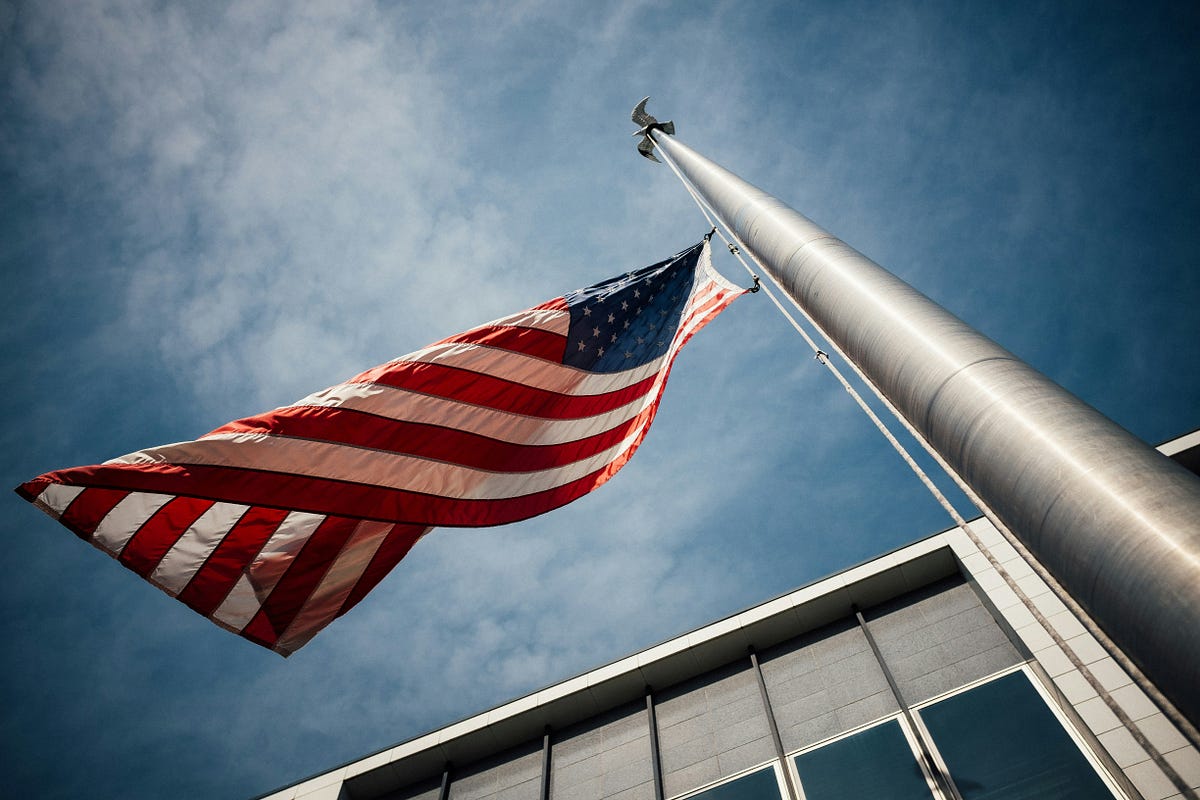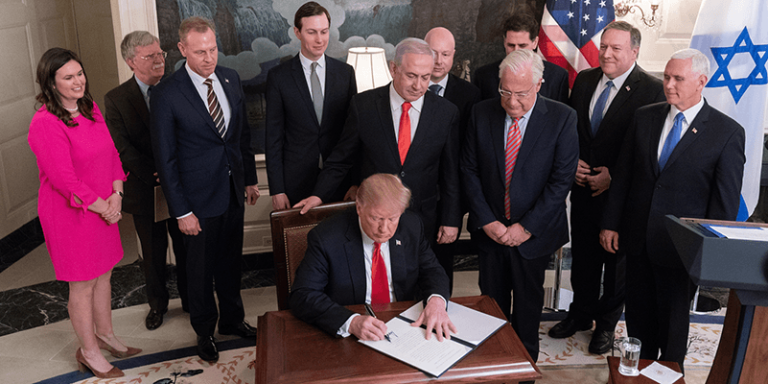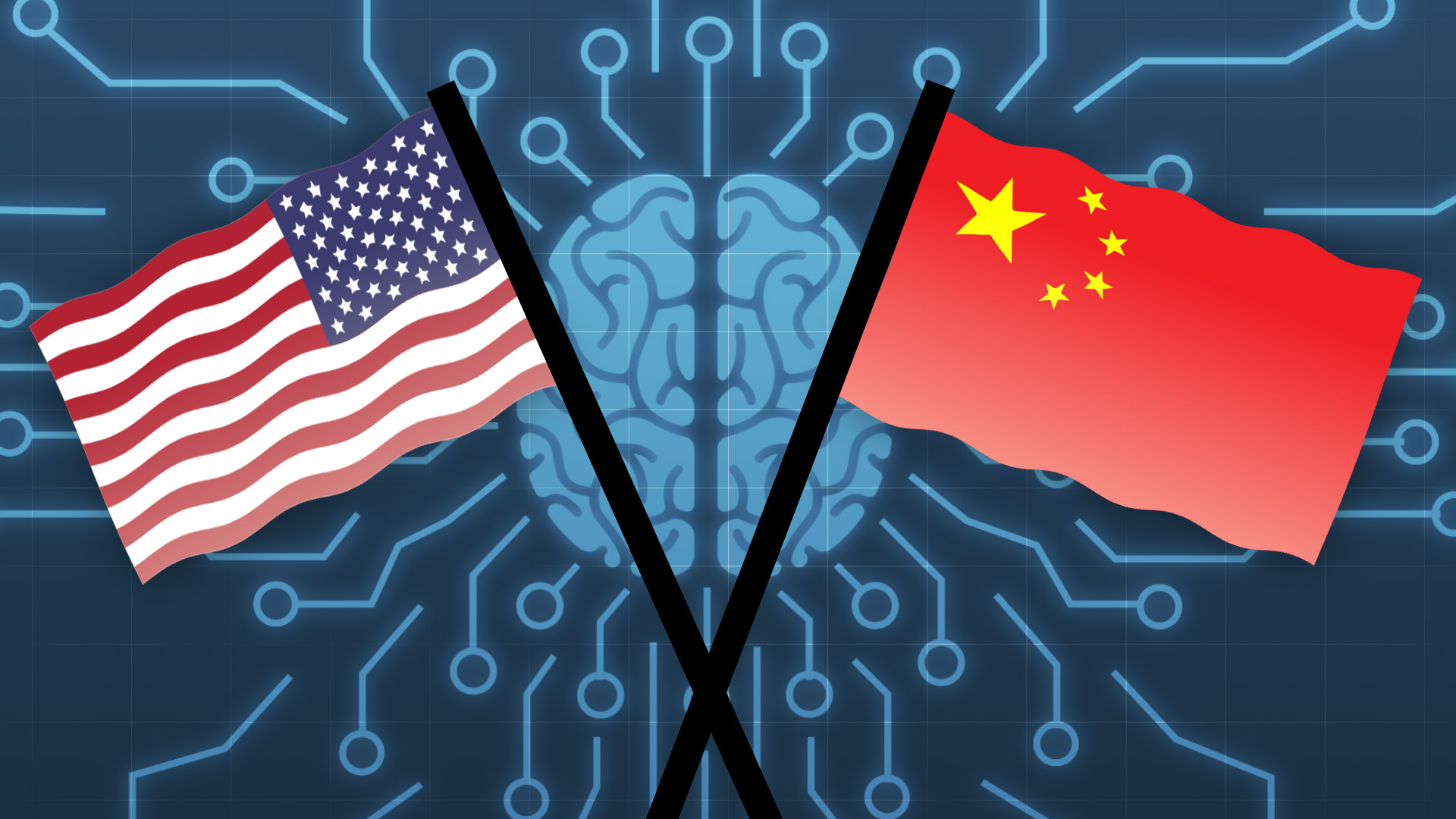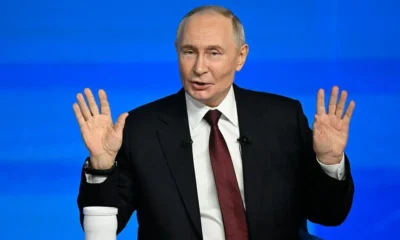American News
Is America Drifting Toward Authoritarianism?

Paris (Imran Y. CHOUDHRY) :- Former Press Secretary to the President, Former Press Minister to the Embassy of Pakistan to France, Former MD, SRBC Mr. Qamar Bashir analysis : In the United States, democracy is held sacred, yet the question lingers uncomfortably: who really governs this nation—Congress, the embodiment of representative debate, or the president, who issues executive orders at a breakneck pace? Nowhere is this tension more alive than in the story of migration—both of people and of power itself—whose routes are shaped by promises, implemented under seal, and tested by the courts.
When Donald Trump took the oath for his second term in January 2025, the air crackled with urgency, a promise that the long stalemates of Congress would no longer stall America’s progress. In just 147 days, he signed his 163rd executive order—already surpassing the 162 orders President Biden issued in his entire four-year term. By the end of August, that tally had climbed to 198. Coupled with his 220 first-term orders, he had, in fewer than five years, issued more directives than any modern president. Only Franklin D. Roosevelt surpassed his total—and FDR’s presidency spanned a global depression and climate of war. The executive pen, once a tool of occasional recalibration, had become Trump’s primary method of governing, as if power itself had picked up suitcase and migrated swiftly from Congress to the Oval Office.
Many of these orders moved along the path of public endorsement. Campaign promises that had galvanized voters—slashing immigration, limiting foreign trade, remodeling federal architecture—were delivered with immediate force. Endorsed by rallies and ballots, these promises took shape: tariffs were imposed, immigration enforcement tightened, Washington’s monuments and streets cleaned up, and classical architecture mandated for new federal buildings. It was governance by immediate mandate, enacted before Congress could deliberate.
Yet these rushed crossings hit legal checkpoints. One order targeted birthright citizenship—stripping citizenship from children born in the U.S. to non-citizen parents. Courts swiftly struck back: judges across the country blocked it, arguing the constitutional protections of the 14th Amendment could not be overturned with a signature. Federal circuits remain divided, the issue escalated toward the Supreme Court, stalled in multiple hearings—a charge halted gate by gate.
Another directive aimed at expanding “expedited removal,” allowing deportations without judicial hearings for immigrants anywhere in the country. The Justice Department warned of expedited processing for up to a million deportations per year. But a district judge ruled that violating due process would be unconstitutional, and several states filed lawsuits. Detention centers overflowed, protests erupted, and the eruption of legal action forced a partial retreat. Trump’s rapid implementation had collided with America’s entrenched legal norms.
These legal battles multiplied. Orders banning transgender individuals from military service, cutting funding for gender-affirming care, and revoking passports with non-binary markers were met with court injunctions. Judges held fast to equal protection and free speech, labeling some orders as discriminatory. The result: a patchwork where federal policy differed starkly across regions, depending on the rulings in local courts. Democracy, in its procedural wisdom, slow-marched through lawsuits and hearings.
But even as rolling injunctions slowed or blocked dozens of orders, Trump’s economic narrative flickered bright. In the second quarter of 2025, U.S. GDP growth was revised to 3.3 percent—above the initial 3 percent estimate and marking a dramatic rebound from a 0.5 percent contraction in the first quarter. Consumer spending rose, AI investments surged, and stock indices climbed to new highs. The economy, for the moment, seemed to reward a government that governed swiftly. The Federal Reserve, sensing softening labor data, eyed interest-rate cuts. Consumer confidence, bolstered by job stability and spending, contributed to this upward trend.
Yet cracks appeared below the surface. Analysts warned of stagflation risks—tariffs pushing prices higher even as growth slowed. The OECD revised U.S. growth expectations downward, and economists cautioned that Trump’s economic rebound was fragile, driven by temporary factors like inventory shifts rather than sustainable demand.
On the geopolitical front, Trump touted himself as a peacemaker, claiming to have ended multiple wars—from conflicts in Africa to Asia. The reality was murkier: several of the cited wars continued, deals remained incomplete, and analysts called his claims exaggerated. At home, however, aggressive immigration enforcement, trade wars, and detention centers like “Alligator Alcatraz” symbolized executive power in action—power that enforced campaign promises but also fractured international goodwill.
Even policies aimed at improving the capital’s image became flashpoints. A White House order created a “Washington Safe and Beautiful” task force, deploying Park Police and the National Guard to clean encampments, scrub graffiti, and restore order around monuments. Soon after, another directive mandated classical architecture in new federal buildings—a symbolic reclaiming of civic aesthetics. Critics saw it as symbolism over substance, an aesthetic takeover rubber-stamped without consensus.
Behind the symbolic momentum lay legal resistance and civic concern. Immigration centers were sued by environmental groups and tribal nations, courts ordered facilities dismantled, and resistance grew across states, courts, and civil society. Difficult public policies had been enacted swiftly—but their permanence remained in question.
This generational tension—between unchecked executive speed and slow democratic process—was the hallmark of a nation on edge. Trump’s rapid delivery on campaign promises demonstrated both the power and peril of executive orders as tools for public mandate. Speed can enact change—but velocity alone is not governance.
Ultimately, the American story of migration—from promises to policy, from the Oval Office to the courtroom—asks a foundational question: Can democracy thrive when its channels are bypassed? Executive orders are powerful locomotives: they move policy quickly, visibly, sometimes effectively; but without democratic gears, they risk derailment.
In the end, Trump’s second term became the most vivid demonstration of that balance. His rapid implementation of executive orders did enable him to fulfill campaign promises, ease trade tensions, reshape government aesthetics, and catalyze economic growth—however briefly. Yet courts stood as gatekeepers, injunctions blocked orders, cities resisted, and allies questioned U.S. reliability. Power migrated swiftly—but settling it into the republic requires democracy’s architecture: deliberation, legitimacy, and institutional consent. As America moves forward, the question remains: will swift power prove foundational—or fleeting?
American News
Trump Doles Out Syria’s Golan Heights to Israel

Paris (Imran Y. CHOUDHRY) :- Former Press Secretary to the President, Former Press Minister to the Embassy of Pakistan to France, Former MD, SRBC Mr. Qamar Bashir analysis : During a White House Hanukkah celebration on December 16, 2025, President Donald Trump made a startling declaration about the Golan Heights, openly revisiting his 2019 decision to recognize Israeli sovereignty over territory internationally acknowledged as Syrian land occupied by Israel during the 1967 war. Trump boasted that no previous American president had dared take such a step, portraying his action as bold, swift, and unconstrained by diplomatic caution. He framed the recognition not as a complex legal judgment but as an act of personal resolve, reducing decades of international dispute to a matter he claimed required only minutes to decide.
Trump described the decision making process with casual bravado, saying he asked then United States Ambassador to Israel David Friedman to explain the importance of the Golan Heights in five minutes or less. According to Trump, he interrupted after barely two minutes, declared that he understood everything necessary, and proceeded to approve recognition immediately. He joked that the land was worth trillions of dollars and remarked that he should have asked Israel for something in return. The remarks transformed a grave issue of sovereignty, occupation, and war into an anecdote of impulsive executive authority with profound geopolitical consequences worldwide today.
Trump used the occasion to reaffirm his broader alignment with Israel and the Jewish community, listing what he described as historic achievements of his presidency. He cited moving the United States embassy from Tel Aviv to Jerusalem, backing the Abraham Accords, and withdrawing from the Iran nuclear agreement negotiated under President Barack Obama. According to Trump, that deal endangered regional security rather than containing Iran. He framed each policy as evidence of loyalty, friendship, and moral clarity, repeatedly portraying himself as the most reliable ally Israel has ever had in Washington during modern United States political history overall period today.
He also spoke at length about his personal connections with Jewish Americans, recalling childhood interactions through his father and emphasizing long standing familiarity rather than political calculation. He referenced his daughter Ivanka Trump’s conversion to Judaism after marrying Jared Kushner as further proof of closeness, though he avoided addressing persistent rumors about his own religious affiliation. These remarks blended personal narrative with state policy, reinforcing the impression that national decisions affecting millions were shaped through intimacy, sentiment, and loyalty rather than institutional deliberation or international legal frameworks governing norms, accountability, restraint, balance, precedent, credibility, neutrality, consistency, legitimacy, stability, justice globally.
The most revealing segment of Trump’s speech came when he warned that Congress and the Senate were becoming increasingly antisemitic, claiming that traditional pro Israel influence in Washington was fading. He described this shift as dangerous and urged greater vigilance from supporters. The statement was remarkable, amounting to a rare acknowledgment that even within American political institutions discomfort with Israel’s conduct is growing. Yet the warning also functioned as pressure, implying that loyalty to Israel should remain a litmus test for legitimacy within United States politics despite constitutional pluralism, debate, dissent, oversight, accountability, ethics, law, values, representation, balance, restraint, democracy.
Despite Trump’s claims of declining support, Israel continues to enjoy unparalleled diplomatic, military, and financial backing from the United States. Washington has repeatedly used its veto power at the United Nations to shield Israel from accountability, even when resolutions condemning occupation or settlement expansion enjoy overwhelming global support. This posture places the United States above the rules it demands others obey, undermining the credibility of the international system it helped construct. Trump’s rhetoric thus exposed a contradiction between professed grievance and actual power exercised globally, institutionally, strategically, consistently, decisively, coercively, selectively, visibly, persistently, controversially, openly, repeatedly, internationally, historically, forcefully today.
Trump’s conduct cannot be examined in isolation from regional realities. Several Muslim majority states have normalized relations with Israel, expanded trade, and entered energy partnerships even as Gaza suffers devastation. Egypt’s multibillion dollar gas agreements with Israel inject revenue into the Israeli economy during ongoing military campaigns. These arrangements are celebrated publicly, while Palestinian suffering continues largely unchecked. Such actions weaken moral criticism of Washington, revealing a regional order where economic interests and regime security override solidarity with Palestine principles, law, justice, humanity, ethics, responsibility, restraint, accountability, credibility, consistency, conscience, leadership, courage, unity, vision, balance, resolve, purpose, fairness, legitimacy, peace.
Reports of military logistics and arms transfers passing through or involving regional actors have further deepened perceptions of complicity. Whether fully substantiated or not, these allegations reinforce a widespread belief that Palestinian blood is discounted in exchange for alliances and profits. In such a context, outrage directed solely at Trump or the United States appears selective and incomplete. Power is sustained not only by those who wield it, but also by those who enable it through silence, cooperation, and convenience across borders, systems, institutions, markets, governments, cultures, alliances, blocs, regions, conflicts, wars, crises, decades, generations, history, memory, politics, morality globally.
Trump’s long promised Middle East peace initiative has effectively collapsed. The proposed international mechanisms to stabilize Gaza were never implemented, ceasefire enforcement remained absent, and settlement expansion continued unabated. Gaza remains devastated, its civilian population displaced and deprived, while accountability mechanisms remain paralyzed. The peace plan functioned less as a pathway to justice than as a political diversion, shifting attention while irreversible facts were imposed on the ground with minimal resistance from global media, institutions, publics, diplomacy, negotiations, law, norms, enforcement, conscience, outrage, empathy, solidarity, responsibility, leadership, resolve, courage, action, urgency, intervention, accountability, fairness, balance, restraint, morality, humanity, peace, justice.
In this light, Trump’s Hanukkah speech read less as celebration than confession. It revealed a worldview where power overrides principle, alliances eclipse law, and suffering becomes collateral. It also exposed the shared responsibility of Western governments and Muslim states that have tolerated, financed, or normalized this order. Condemning Trump alone is therefore insufficient. He acted openly, but he was enabled by a broader system unwilling to enforce its own rules or defend a truly universal standard of justice grounded in law, equality, sovereignty, dignity, humanity, restraint, accountability, consistency, legitimacy, balance, peace, order, ethics, norms, responsibility, credibility, fairness, stability, conscience globally.
If peace and justice are to mean anything, the Muslim world must confront its own contradictions. It cannot decry occupation while financing its beneficiary, nor invoke international law selectively. Trump’s words should be read as a mirror, reflecting the erosion of norms and collective failure to resist it. Until regional actors withdraw complicity and demand accountability consistently, Palestine will remain abandoned, international law weakened, and power unrestrained. Moral authority cannot be outsourced; it must be practiced through courage, sacrifice, and principled consistency rooted in justice, dignity, humanity, solidarity, responsibility, leadership, restraint, ethics, law, balance, fairness, credibility, legitimacy, peace, stability universally.
American News
Trump’s Naval Gamble on Venezuela

Paris (Imran Y. CHOUDHRY) :- Former Press Secretary to the President, Former Press Minister to the Embassy of Pakistan to France, Former MD, SRBC Mr. Qamar Bashir analysis : Gunboats, Oil, and the Illusion of Control: Why Trump’s Naval Embargo on Venezuela Risks Repeating History
President Donald Trump’s decision to impose a naval embargo on sanctioned Venezuelan oil tankers marks one of the most dramatic escalations in U.S.–Latin America relations in decades. Framed as a national-security response to drug trafficking—after the administration classified fentanyl and its precursors as “weapons of mass destruction” through an executive order—the move signals a fundamental shift: from counter-narcotics cooperation to maritime coercion. While officially described as a limited action targeting sanctioned vessels, the practical effect resembles a partial blockade, carrying economic, geopolitical, and humanitarian consequences far beyond its stated purpose.
Had the United States extended this naval action to all Venezuelan shipping, it would have amounted to a de facto declaration of war. Even in its current form, the message is unmistakable: Washington is prepared to use sea power to choke Venezuela’s primary economic lifeline—oil exports—under the banner of law enforcement. Caracas, unsurprisingly, responded by ordering its navy to escort oil tankers through territorial and international waters, asserting sovereignty through symbolism rather than strength. The imbalance is stark. Venezuela’s modest naval capabilities—largely coastal patrol vessels and a handful of aging combatants—cannot be meaningfully compared to the global reach of the U.S. Navy, with its aircraft carriers, nuclear submarines, destroyers, and unmatched logistical infrastructure. The escort order is not about deterrence; it is about dignity and survival.
The real battlefield, however, is not the Caribbean Sea but the global energy market. In late 2025, Venezuela was exporting roughly 900,000 barrels of oil per day—its highest level in years after partial sanctions relief and creative logistics. Around 70 to 80 percent of this oil moved through a shadow fleet: aging tankers, opaque ownership structures, ship-to-ship transfers, and insurance arrangements designed to bypass sanctions. U.S. enforcement has now focused precisely on this network. More than 30 tankers operating around Venezuelan waters are already sanctioned, and the fear of seizure has caused many loaded vessels to remain anchored, unable—or unwilling—to sail.
This paralysis matters. If even two-thirds of Venezuela’s exports are disrupted, roughly 600,000 barrels per day could be removed from the global market. On paper, that represents less than one percent of global supply. In reality, oil prices are driven not by averages but by expectations and risk premiums. Markets respond sharply to uncertainty, especially when shipping routes become contested. Even modest disruptions can trigger disproportionate price movements, particularly for vulnerable import-dependent economies. A sustained squeeze could force Venezuela to shut in production due to storage constraints, turning a logistical problem into a structural collapse.
The consequences would not stop at oil prices. Venezuela’s economy remains overwhelmingly dependent on crude exports. Further strangulation of this sector would reduce state revenues, weaken the currency, worsen inflation, and deepen shortages of food and medicine. The burden would fall not on political elites but on ordinary citizens already exhausted by years of crisis. And history offers a grim forecast: economic collapse fuels migration. Venezuela has already produced one of the largest displacement crises in modern history, with nearly eight million people leaving the country over the past decade. Another severe shock could push hundreds of thousands more onto regional migration routes—first into neighboring states, then northward toward the United States.
Ironically, the very policy justified as a defense of American security may intensify pressures on U.S. borders. Colombia, already hosting millions of Venezuelan migrants, lacks the capacity to absorb another wave without destabilization. Other regional economies, strained by inflation and debt, would struggle as well. Migration does not occur in isolation; it cascades. When one country collapses, the shock ripples across continents.
Geopolitically, the naval embargo also accelerates Venezuela’s alignment with U.S. rivals. Russia and China have already condemned the move, framing it as a violation of sovereignty and maritime norms. While neither is likely to engage militarily, diplomatic, financial, and logistical support to Caracas could deepen, transforming Venezuela into another node in a growing network of states resisting U.S. pressure. Even traditional U.S. partners are uneasy. Canada and several Latin American countries, themselves affected by trade disputes and tariffs, see the normalization of gunboat diplomacy as a dangerous precedent. Rather than strengthening alliances, Washington risks reinforcing the perception that it creates more enemies than partners.
This raises a fundamental question: does maritime coercion actually reduce drug trafficking into the United States? Evidence suggests otherwise. The narcotics trade is demand-driven. As long as millions of Americans consume cocaine, fentanyl, and other drugs, suppliers will find routes—by sea, land, air, or digital networks. Interdiction may raise prices temporarily, but it rarely eliminates supply. Instead, it increases profitability, incentivizing smugglers to innovate and diversify. Destroy one corridor, and another emerges.
The United States has alternatives—more effective, less destructive, and more humane. The first is demand reduction. Large-scale investment in prevention, education, and treatment can shrink the market that fuels trafficking. Decades of research show that rehabilitation and public-health approaches are more cost-effective in reducing drug use than interdiction alone. Recent declines in overdose deaths, though fragile, demonstrate that progress is possible without militarization.
The second option is dismantling domestic trafficking infrastructure. Drugs do not distribute themselves. They rely on financial networks, logistics hubs, corrupt intermediaries, and money-laundering systems operating within U.S. borders. Aggressive enforcement against these networks—combined with financial transparency and asset seizures—would strike at the heart of the trade without destabilizing foreign societies.
The third is smarter border security integrated with humanitarian policy. Borders can be controlled without turning neighboring countries into failed states. Technology, intelligence sharing, and legal migration pathways reduce chaos far more effectively than economic strangulation abroad.
By contrast, collapsing Venezuela’s economy would likely increase, not decrease, drug flows over time. Unemployment and desperation are fertile ground for illicit activity. When formal economies implode, informal and criminal ones expand. Smuggling becomes not just profitable but necessary for survival. The result is a vicious cycle: sanctions breed collapse, collapse breeds crime, crime justifies further sanctions.
At its core, the naval embargo reflects an old reflex dressed in new language. The rhetoric has changed—from communism to drugs, from ideology to security—but the method remains coercion. History warns where this path leads. Iraq was once sanctioned into ruin in the name of global safety; the outcome was regional instability, humanitarian catastrophe, and long-term insecurity.
Sovereignty is not a privilege reserved for powerful states. Small and weak nations possess it as well, along with the right to economic survival. Using drug smuggling as a pretext to weaponize hunger, unemployment, and migration risks undermining the very international order the United States claims to defend.
If Washington’s objective is fewer drugs, fewer refugees, and a safer hemisphere, it must look inward as much as outward. Gunboats can seize tankers, but they cannot cure addiction. Blockades can choke economies, but they cannot build stability. Real security lies not in dominating seas, but in addressing the human systems—demand, inequality, governance—that drive crisis in the first place.
The choice before the United States is not between strength and weakness, but between wisdom and repetition. History is watching.
American News
China Poised to Outpace the USA in the AI Race

Paris (Imran Y. CHOUDHRY) :- Former Press Secretary to the President, Former Press Minister to the Embassy of Pakistan to France, Former MD, SRBC Mr. Qamar Bashir analysis : In a recent interview, a senior NVIDIA executive offered perhaps the most candid assessment yet of the global AI race, admitting openly that China is going full throttle across the entire AI ecosystem and will soon surpass the United States in building and deploying advanced AI platforms. According to him, AI is not a single monolithic technology; it is a vertical stack of more than five layers, stretching from the bottom layer of raw energy to the very top layer of applications. And across this entire stack, China is now moving with a speed, scale, and national purpose unmatched by any other country.
He began with the foundational fact that AI is ultimately an energy-hungry technology. Training frontier models requires immense electricity — entire power stations dedicated to data centers — and here the gap is stunning. China today generates over 9,600 terawatt-hours of electricity annually, nearly double the roughly 4,800 terawatt-hours produced in the United States.
Massive hydropower, coal, solar, and wind installations continuously expand China’s energy base, giving it the ability to power tens of thousands of new data centers and fabrication plants. Without this energy, nothing else in the AI stack functions. The United States, he warned, simply does not have enough electricity to reindustrialize, reshore manufacturing, or scale AI at the level required to maintain global leadership. Even if America decided today to double its energy output, it would take five to ten years to build the necessary power infrastructure.
The second structural difference is speed. In the U.S., constructing a semiconductor manufacturing facility can take three years or more because of permitting, regulation, zoning, and litigation. In China, the same facility can be erected in a matter of months, sometimes weeks, because the national system aligns government, regulation, industry, and capital around a single purpose: build fast, build big, and build continuously. This difference in time — not technology — is the decisive strategic advantage. Every month lost is a compounding delay. Every month gained is a compounding lead.
He further explained that semiconductors are the backbone of the AI chain, and here again the numbers speak for themselves. China has been expanding its semiconductor manufacturing capacity at an annual rate approaching 30–40 percent, with some categories even doubling year over year, particularly in mature nodes below 14nm. The United States and Europe, by contrast, expand capacity by barely 10–20 percent annually. If this trend continues, China’s domestic production will increasingly cover its own AI needs, reducing dependence on imported chips and eventually surpassing rivals in total volume. The idea that China would always lag in semiconductors is collapsing under the weight of its own accelerated progress.
Then comes the higher layer of the AI stack: the models, platforms, and applications that convert computation into economic value. Here the cultural and institutional differences are profound. In China, almost every major AI model is open source, from Baidu’s ERNIE to Alibaba’s Qwen to models emerging from startups like Zhipu and 01.AI. Tens of thousands of researchers, students, surgeons, engineers, and small businesses use these models freely, improving productivity and innovation across society. China is not earning money from these open models; instead, it is earning capability, scale, and national momentum. Open-source AI becomes a nationwide accelerator that multiplies learning, experimentation, and economic output.
In the United States, by contrast, almost all frontier models are closed and commercial. They are powerful, but they are fenced behind subscriptions, APIs, restrictions, and corporate ownership. This produces revenue, not widespread capability. The NVIDIA executive made a critical point: China is not monetizing AI at the application level; it is weaponizing openness to democratize AI across its entire population. This is why Chinese AI applications are spreading faster than American ones — because the barriers to entry are near zero.
He also offered a striking cultural insight. When surveyed, nearly 80 percent of Chinese citizens view AI as a positive force for society. In the United States, the sentiment is almost the reverse — roughly 20 percent view AI positively while 80 percent express fear, distrust, or resentment. Innovation cannot thrive in a cultural climate of suspicion. China has fused optimism, national pride, and collective ambition into its AI mission. The U.S. has not.
One example he gave was Huawei, now emerging as one of the fastest-growing AI companies despite American sanctions. The company builds chips, models, cloud platforms, and 5G systems simultaneously and is advancing at a speed that even American executives privately acknowledge with respect. When the U.S. president asked him for recommendations on how to reindustrialize America, he replied that the first requirement is not money or technology but energy — without doubling America’s energy output, no amount of reshoring will succeed. AI factories, semiconductor fabs, and advanced manufacturing all require stable, abundant, and cheap electricity. China has it. The United States does not.
He also warned that the U.S. system, while superior in pure innovation and scientific breakthroughs, is deeply constrained by regulation, litigation, and slow infrastructure development. China, meanwhile, has government coordination, manufacturing speed, infrastructure readiness, and cultural enthusiasm. As a result, the remaining AI gap between China and the United States is now as small as six months — and shrinking.
Behind these observations lies a broader truth: China is building the full AI stack. Energy, infrastructure, semiconductors, compute clusters, models, applications, and societal adoption. Every layer reinforces the others. The United States excels in some layers, particularly research and frontier architecture design, but lags in foundational layers like energy, manufacturing, and large-scale deployment. Without rebuilding the bottom of the stack, America cannot maintain leadership at the top of the stack.
Yet he was not pessimistic about America. He emphasized that the United States is a nation of extraordinary people, extraordinary innovators, extraordinary scientists, and extraordinary entrepreneurs. If the country decides to renew itself — doubling energy capacity, rebuilding industrial infrastructure, streamlining regulations, enabling faster construction, and fostering a cultural shift that welcomes AI rather than fears it — then the United States can still compete with China, perhaps even share global leadership. But without such a national transformation, the momentum is clearly with Beijing.
The verdict from within America’s own technology leadership is unmistakable. China is not catching up; China is accelerating past. It is building more, deploying more, training more, and opening more. It has the energy, the infrastructure, the manpower, the optimism, the manufacturing base, and the national will to dominate the AI century. If trends continue, then sooner rather than later, China will indeed be number one in the AI business — and the world will be shaped by the platforms it builds.
-

 Europe News10 months ago
Europe News10 months agoChaos and unproven theories surround Tates’ release from Romania
-

 American News10 months ago
American News10 months agoTrump Expels Zelensky from the White House
-

 American News10 months ago
American News10 months agoTrump expands exemptions from Canada and Mexico tariffs
-

 American News10 months ago
American News10 months agoZelensky bruised but upbeat after diplomatic whirlwind
-

 Art & Culture10 months ago
Art & Culture10 months agoThe Indian film showing the bride’s ‘humiliation’ in arranged marriage
-

 Art & Culture10 months ago
Art & Culture10 months agoInternational Agriculture Exhibition held in Paris
-

 Pakistan News6 months ago
Pakistan News6 months agoComprehensive Analysis Report-The Faranian National Conference on Maritime Affairs-By Kashif Firaz Ahmed
-

 Politics10 months ago
Politics10 months agoUS cuts send South Africa’s HIV treatment ‘off a cliff’

















